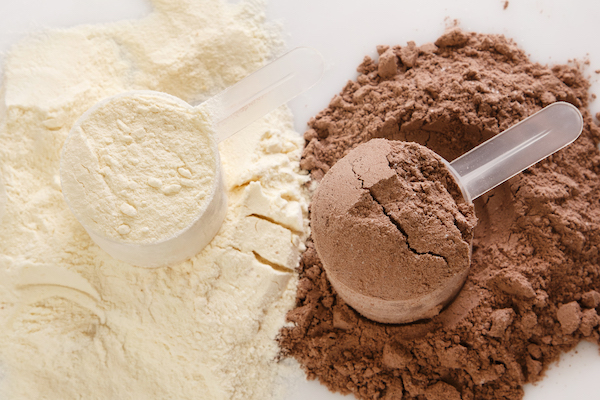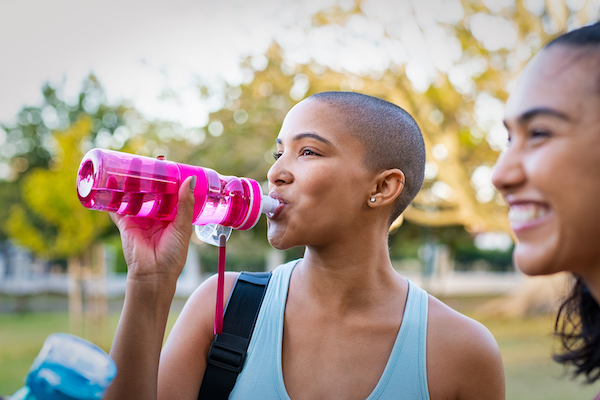Don’t Skip Rest Day! Here’s How to Do It Right

We spend a lot of time encouraging you to work up a sweat to help you get and stay fit. So if we’re talking to you about ways to make sure you have an effective rest day — in essence, recommending you take a day to do pretty much nothing — there’s probably a good reason.
Rest days are crucial not just for giving your body time to recover from workouts, but also to help your muscles become stronger and bigger as they rebuild.
“Heavy exercise designed to elicit maximum gains in strength and power damage muscle to an extent,” explains Elaine Choung-Hee Lee, Ph.D., associate director of the Human Performance Laboratory at the University of Connecticut. “Day after day with little time between heavy training sessions, muscle may not have time to fully recover, and you’ll actually see a decrease in strength, power, and endurance.”
You should take at least one day off per week, though the American College of Sports Medicine (ACSM) recommends beginners give themselves a rest day in between workouts.
Or, if you’re completely gassed from training hard, take that as a cue to take a full day off and not exert effort doing much of anything, says Mike Bracko, C.S.C.S., exercise physiologist and fellow in the ACSM.
Now that you understand why it’s a good thing to give yourself a day off, what is the best way to take a rest day? We’ve outlined it below.
1. Sleep In

“Sleeping is hands down the most important part of any fitness program,” Bracko says.
Scoring quality shut-eye both when training and resting is crucial. The whole point of a rest day is you’re giving your body the opportunity to recuperate, and nothing helps decrease the strain on your systems like loading up on sleep. Shoot for at least eight hours.
2. Eat Healthy, Wholesome Foods

A rest day means you’re giving yourself a day off from training — not a day off from your diet. It’s always important to ensure you’re getting enough macronutrients (carbohydrates, fats, and proteins).
But the other nutrients that fresh food offers are important, too. According to Lee, those training days tap into the key nutrient stores your body keeps on call.
“Antioxidant-rich, micronutrient-rich, and vitamin-rich foods are especially important to recovering muscle tissue,” says Lee.
So put down those fries. And, while you’re at it, throw away that bag of chips you’ve been stashing in the back of your cupboard and resist the call of the cupcake. We don’t care how trendy it is.
Instead, eat fruits and vegetables in a rainbow of colors — the hues are often evidence of a specific micronutrient, so you want to eat as many as possible — as well as healthy fats, like avocado, olive oil, salmon, or a supplement like omega-3 fatty acids, all of which can help combat inflammation.
3. Don’t Skimp on Protein

You’ve probably heard it’s important to consume protein within 30 minutes after a grueling workout, but studies show that your body’s ability to utilize protein to build muscle remains elevated for a full 24 hours after your heavy sweat session.
Your day off is likely going to come within that post-workout 24-hour window, so your body is still working to rebuild torn muscle tissue even if you aren’t causing any new damage that day. To do this, your body needs a fully stocked amino acid pool from proteins — so eat up that protein!
Powders like Beachbody Performance Recover post workout formula will deliver 20 grams of protein along with nutrients like pomegranate extract to help promote muscle recovery and reduce muscle soreness.
Think of it this way: Downing sufficient protein every day gives your muscles the best chance to rebuild as strong as they possibly can after a single workout. What better argument is there for taking a rest day and refueling your body?
4. Hydrate

“Drinking water to maintain a hydrated state during training, after exercise, and during recovery is critical to not only performance but also to reducing fatigue, improving your mood, and improving cognitive function,” Lee explains.
That tough guy who insists he “doesn’t need” water while working out or playing hoops for two straight hours? Straight out wrong. And dumb.
When you’re properly hydrated, your body is functioning as optimally as possible. That’s one of the best ways to ensure that you get an effective workout and subsequent recovery.
How much water should you guzzle?
“Drink so that when you pee, your urine is the color of light lemonade,” Lee says.
Rest Day vs. Recovery Day
If you’re feeling completely wiped from a tough workout, don’t hesitate to kick your heels up and give yourself a day of complete rest day.
“Fully passive rest days are important for replenishing nutrient stores,” Lee reminds us yet again.
But if you’re feeling good, or just a little sore, consider performing active recovery like walking, easy cycling, swimming, or yoga, along with foam rolling the muscles, all of which will boost blood flow to your muscles, enhancing the delivery nutrients that facilitate their repair and growth, and eliminating substances that hinder them.
